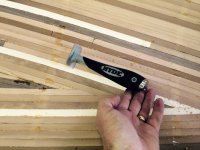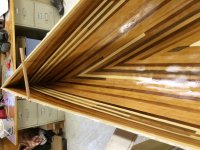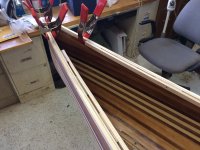Talk about a flat palm to my forehead, I never ever considered trimming the fiberglass prior to wetting out. Wow, I wasted a bunch of material through my complete oversight. In my defense, I sort of was focused on other aspects of the project. Thank you very much for the tip...it will be applied on my next build and the next one and so on.
The roller was yellow and very firm. Left over from another project, it likely wasn't the proper tool for this application. The foaming was pretty spectacular and it was quite evident that this was not something I should spend time attempting to make it work.
Question for the group...how much of the residual visible weave will be taken out in the varnish process? In mentally reviewing the hull, I see about 80 percent smooth as glass and another 20 as being "weave textured" when spied at an angle. Thank you,
Mac
The roller was yellow and very firm. Left over from another project, it likely wasn't the proper tool for this application. The foaming was pretty spectacular and it was quite evident that this was not something I should spend time attempting to make it work.
Question for the group...how much of the residual visible weave will be taken out in the varnish process? In mentally reviewing the hull, I see about 80 percent smooth as glass and another 20 as being "weave textured" when spied at an angle. Thank you,
Mac
Last edited:
















